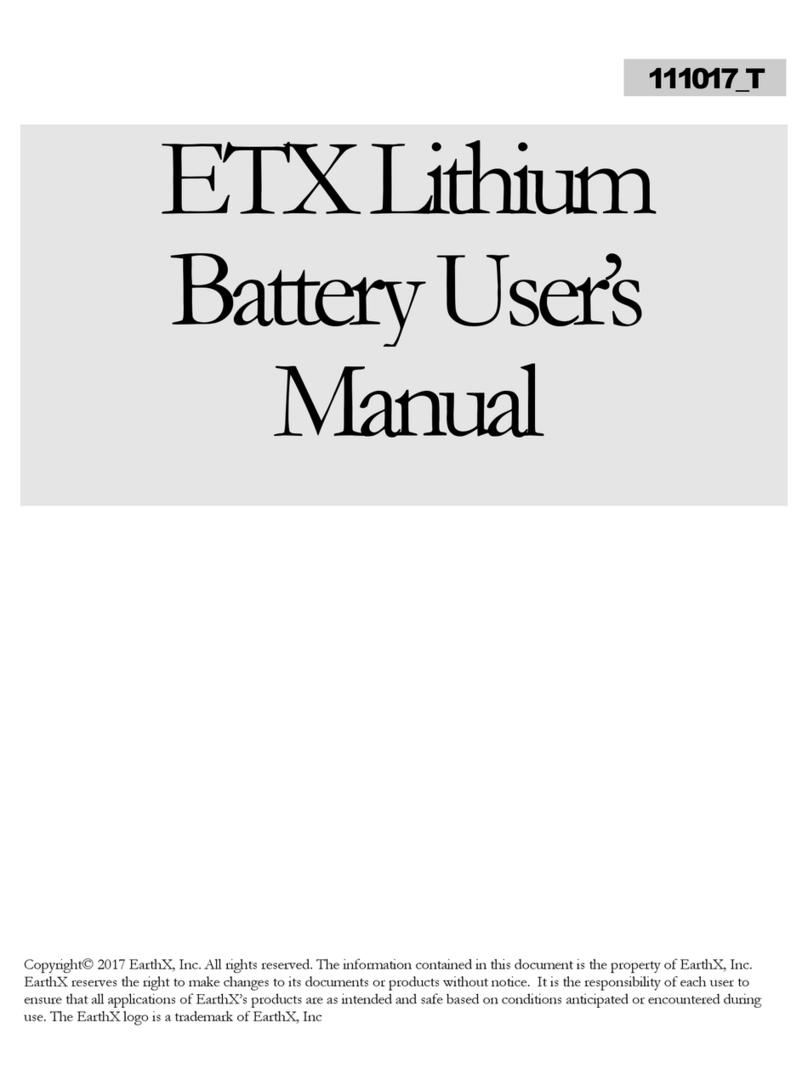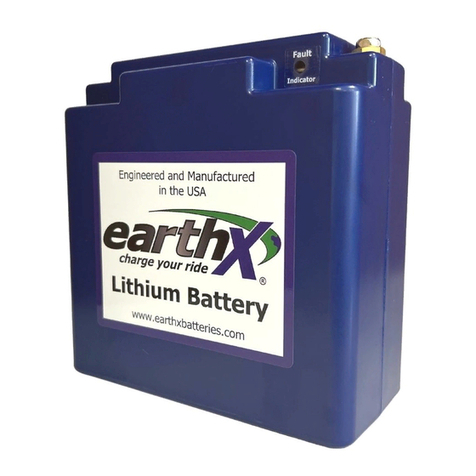
E T X T S O L I T H I U M B A T T E R I E S
180426
2
Overview – Purpose
This manual covers the TSO Article (Part) installation aspects for the ETX900-TSO Battery
to be installed on 14 CFR part 23 Aircraft. Installations of rechargeable lithium batteries
defined herein, are expected to meet the guidance of AC 20-184. This TSO Battery meets
the applicable TSO-C179b and is targeted for installation in 14 CFR part 23 airplanes. Refer
to AC 20-184 for full Aircraft installation guidance and requirements not the subject of this
manual.
This manual is to provide information (as required by CFR Part 23, Appendix G) to enable
maintenance personnel to maintain the ETX900-TSO battery in a part 23 airplane. This
ICA number 180426-01 covers the Cessna 182P specifics and are contained in Appendix A.
In the spirit of an AML STC, this ICA is intended for general use and reuse with specifics
contained in the appendices for a specific model. Additional models using the Model
Qualification Process (MQP) will be added to the AML-STC. Each model or series will
have a specific ICA called out by document dash number. EarthX is using the Appendix
approach to facilitate maximum reuse as suggested in AC 23-20.
The EarthX Lithium battery is designed as a maintenance free replacement for 12-volt lead-
acid or lithium starter batteries. The ETX900-TSO battery is part of the electrical system as
a Secondary function with the Alternator system being Primary in the aircraft electrical
system. The battery within this system has two subfunctions: Starting Battery and Storage
battery.
Per 14 CFR 23.1309-1E and TSO-C179b, the Failure Condition Classification (FCC) for this
TSO Battery was initially defined as “Major” during the TSO project. Other installations
may deem the analysis lessor or greater, dependent on the function in the particular
installation Aircraft. Operation in an over-voltage condition (greater than 16 volts) may
potentially result in a dangerous battery failure. Additionally, the safety of the aircraft may
be compromised, if the battery is not properly sized to provide adequate emergency power,
according to the aircraft essential system design load and duration.
Although many internal and external safety features have be designed per TSO and AC 20-
184, failure to follow all application use, installation, charging, and storage instructions may
result in battery damage and could lead to fire!
Installation Requirements
“This article meets the minimum requirements of technical standard order (TSO) C179b.
Installation of this article requires separate approval.” The article may be installed only according
to 14 CFR part 43 and the applicable airworthiness or STC requirements. Below are the installation
specific, in-service requirements as identified in EarthX’s AML STC process document 18114-03
and is not part of the TSO Part (LRU) specific certification under TSO-C179b:






























